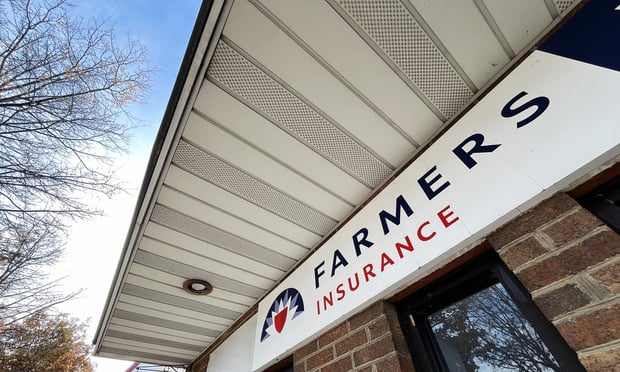 Mark Snyder is the principal at Inpoint, an Aon business. He may be reached at [email protected].
Mark Snyder is the principal at Inpoint, an Aon business. He may be reached at [email protected].
This article is the first in a three-part series about the core principles underlying successful claims quality improvement programs.
We often stress the importance of "best practices," but it is actually best-practice behaviors that drive cultural shift at organizations. It is important to keep in mind that certain core guidelines transcend company-specific protocols. To that end, this exclusive three-part series, we examine "best practices" for claims quality assurance at virtually any size carrier.
Lack of adherence to best practices continues to be a large impediment to claims handling excellence. This disconnect can have far-reaching and quite damaging repercussions, including compromising quality, customer satisfaction, and financial strength. Therefore, it is essential to accurately diagnose issues in order to determine the full impact on business results.
Calibration In Context
In the context of quality measurement, calibration refers to the degree to which claims field operations—including the various regions, reviewers, and supervisors working in the trenches—not only understand organizational best practices but also measure compliance with these best practices.
The less synchronization there is between the field and the home office team, the wider the calibration gap. The goal is to narrow these gaps, thereby ensuring claims protocols are followed and the organization is paying exactly what is owed in each case, meaning not a penny more, or less.
"Measuring quality is a function of measuring compliance with best practice guidelines," explains Russ Kelly, vice president of property and auto claims at Liberty Mutual Agency Corp. "From that, your best practices speak to ensuring that you are paying the right amount for both loss and expense."
 The chart (to the right) outlines four core principles underlying successful claims quality improvement programs and therefore provides the basis for this editorial series. Integrating these principles into your claim organization's culture helps ensure the adoption and continuous application of best practice behaviors that will improve financial performance and enhance customer satisfaction.
The chart (to the right) outlines four core principles underlying successful claims quality improvement programs and therefore provides the basis for this editorial series. Integrating these principles into your claim organization's culture helps ensure the adoption and continuous application of best practice behaviors that will improve financial performance and enhance customer satisfaction.
Introducing the Framework
The first cornerstone of continuous quality improvement is identifying, documenting, and embedding highly measurable claims best practices into your culture.
Organizational policies and best practice guidelines are the marching orders for a claims organization. They are the dynamic elements of an operational strategy, reflecting the impact of constantly changing regulatory standards, market conditions, customer expectations, competitive pressures, and technological innovation.
To be effective, process guidelines must be easily understood and achievable. Clearly define expectations, which should be documented in such a way as to not put the organization at risk of bad faith litigation. Let's assume you have compiled and published your best practices operational guidelines. You have also trained, tested, and certified that your adjusters know how to apply these best practices. Why then might you still observe performance variance in excess of expectations?
The reason can be surprisingly subtle. Individual claims handlers have differing levels of knowledge and skill, and consequently varying degrees of understanding best-practice behavioral expectations. Additionally, each claims handler has a unique desk-level process, a pattern of behaviors applied to every file he or she touches. Effectively, claims handlers are translating operational guidelines and best practices in real-time based on their baseline knowledge, practices, and behaviors. This leads to a fundamental challenge: how to constructively manage the performance variance introduced by differing skill set and knowledge.
Early Adherence Measurement
Now consider our second cornerstone of the overall framework, "implementing a consistent, metrics-based approach to measuring best practice adherence at all organizational levels." It is often prudent to introduce a carefully crafted best-practices compliance questionnaire, which will enable an organization to:
- Accurately translate best practices into a measurement tool that allows for the capture of job performance and behavioral attributes in a discrete data format.
- Identify tasks and decision points where the highest frequency of errors occur.
- Assess the economic impact of task, analysis, and decision errors at the most granular level.
Generating insightful reports will also enable supervisors to develop improvement plans and deliver meaningful, objective feedback to direct reports. Once a questionnaire has been drafted, a review protocol supporting continuous quality improvement objectives should be developed. It may include both a central review process and a field review process. Here's why:
- A sound central review process ensures steady state measurements for evaluating the program's impact on financial performance are in place.
- A continuously calibrated field review process forms a foundation for departmental/unit /claims handler quality issue identification and analysis. This ensures that claims supervisors have the requisite tools to develop and execute sustainable quality improvement plans.

This is a key step toward enabling your supervisors to more effectively manage their teams and create a sustainable culture of continuous improvement that empowers individual claims handlers. Keep in mind, however, there will be hurdles to overcome, such as:
- Calibrating your organization to your best practices and behavioral expectations.
- Errors result from sub-optimal decisions made by individuals, but performance data is not always adequately individualized.
- Aggregate quality improvement requires improvement in knowledge, skills and desk level behavior from each individual.
- Claims supervisors are not traditionally well-versed or experienced in data analysis and quality improvement techniques.
- Gaps can occur in addressing performance issues as a result of supervisory knowledge and skill deficits, as well as inconsistent improvement planning and execution processes.
Motivating Your Troops
Supervisors must also look at empowering staffs from a common sense perspective. Specifying ideal practices is one thing; encouraging adherence is another. Ideally, behavior change comes about because the claims manager offers a viable incentive to improve or "calibrate" performance. This could mean awarding objective quality scores at every organizational level. Scores should reflect what is going on—either hard work or lack thereof—with those in charge, such as a regional manager or a claims manager.
"Everyone has the opportunity to improve," Kelly says. "Putting someone on an action plan should not have a negative connotation. Rather, this positive step helps staff acquire the skills to change the behavioral outlook down the line."

The expectations about best-practice behavior should be, for lack of a better term, "set in stone." The entire process—including audit tools, methodologies, and holding staff accountable—hinges on incremental improvements. A consistent measurement tool will yield data to help pinpoint where improvements are necessary. Presenting clearly defined benchmarks will in turn generate the behavior modifications required to execute incremental improvements.
"There must be calibration to where everyone understands best practices, along with how we want to measure those best practices so that it is driven at the supervisory level," Kelly says. "Any type of overarching home office audit is customarily done on an annual or semi-annual basis at best. Therefore, to secure claims handlers' buy-in, a supervisor must push them toward achieving those best practices each day. First-level supervisors especially will reinforce [best-practice behaviors] via daily coaching and mentoring."
Consistency across all levels is foundational to propelling continuous claims quality improvement. Motivated, calibrated unit managers and field managers will be instrumental in integrating expectations into a performance management portfolio. That means claims managers will also be measured on their level of calibration, including how they are measuring their direct reports (via claims review). They will be held accountable for not only understanding best practices but also relaying behavioral expectations to their direct reports.
Ultimately claims personnel on every level of the organization should feel ownership and pride of their individual role in ensuring quality and ideal claims outcomes. This means being confident that each claim has been handled appropriately and in keeping with company standards.
Want to continue reading?
Become a Free PropertyCasualty360 Digital Reader
Your access to unlimited PropertyCasualty360 content isn’t changing.
Once you are an ALM digital member, you’ll receive:
- Breaking insurance news and analysis, on-site and via our newsletters and custom alerts
- Weekly Insurance Speak podcast featuring exclusive interviews with industry leaders
- Educational webcasts, white papers, and ebooks from industry thought leaders
- Critical converage of the employee benefits and financial advisory markets on our other ALM sites, BenefitsPRO and ThinkAdvisor
Already have an account? Sign In Now
© 2024 ALM Global, LLC, All Rights Reserved. Request academic re-use from www.copyright.com. All other uses, submit a request to [email protected]. For more information visit Asset & Logo Licensing.








